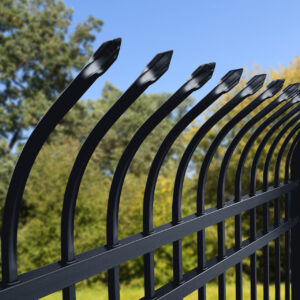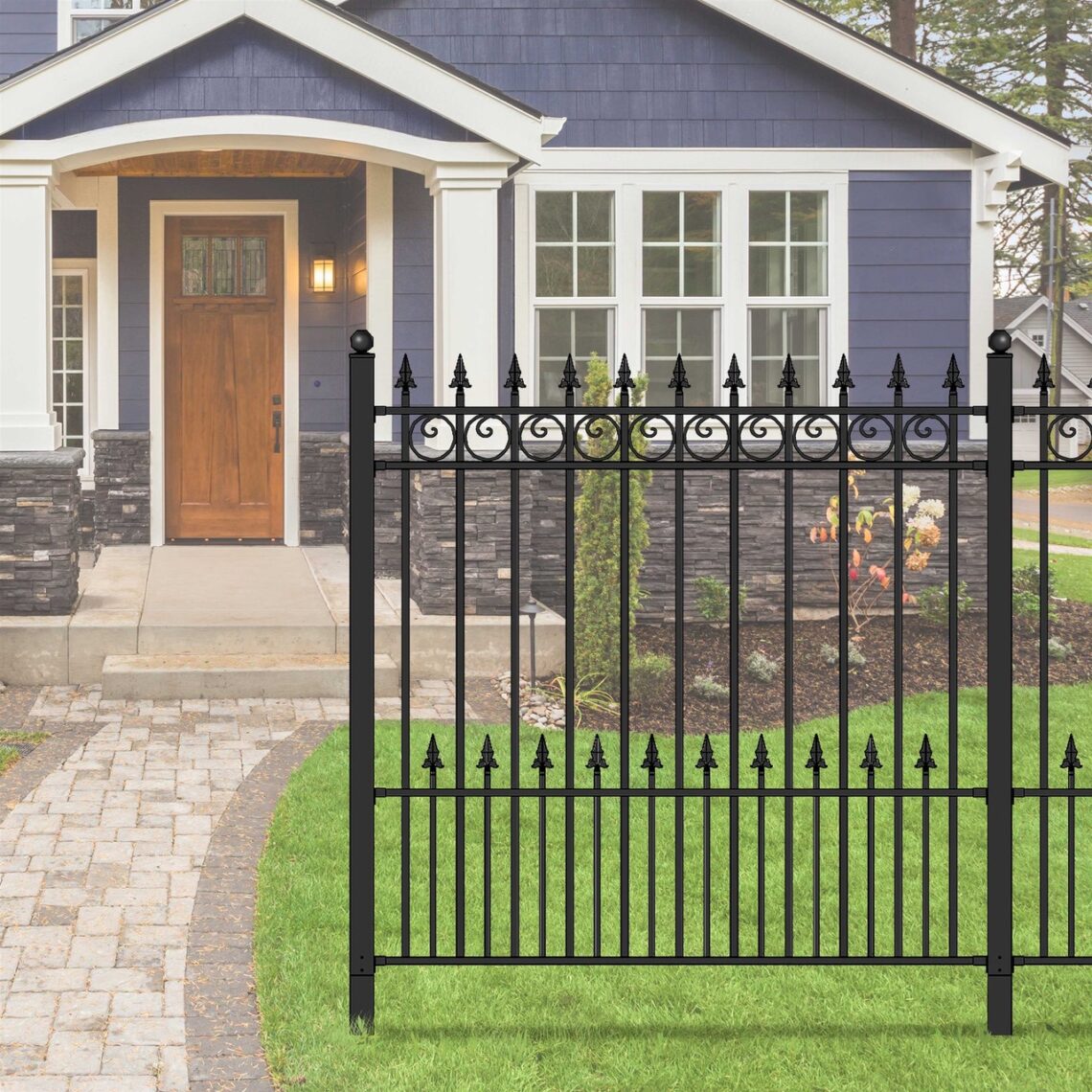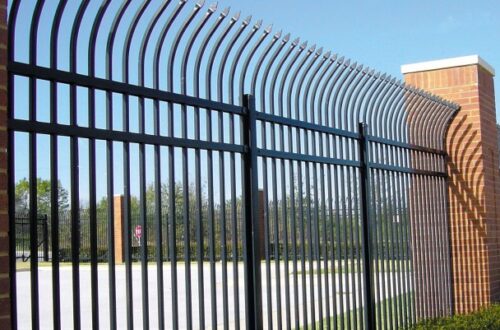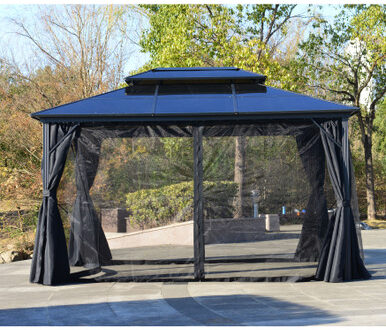Whether you’re craving more privacy from nosy neighbors, keen on keeping your new puppy safe, are keeping wildlife like deer out of your backyard, or are determined to add more flair to your space with a decorative border, fences are a timeless, attractive solution to your wants and needs.
Whether you decide on a vinyl fence, wood fence, wrought-iron-style fence, or other types of metal fencing material, it’s essential to determine how much you will need. Before you arrange to have an existing fence removed and a new fence installed—or dig out your tools to perform the project yourself—figuring out how much fencing you’ll require is key. This will help you draw up a budget and potentially save you from having too little or too much fencing in the end.
Read on for our expert answers to the age-old landscaping question: How much fence do I need?
Establish Your Aims
Fences are as varied as homes—and the people who own them.
Some opt to fence in their front yard but keep the back yard wide open, particularly if the rear of their property opens up to forested land or is edged with trees. Others implement fences only in one specific area—say, to keep pets from escaping or to close off a garden. Others still choose to have their entire yard enclosed.
To phrase it differently, it’s a matter of personal taste, but you can’t establish the amount of fence panel material you’ll need without having a clear picture of your goals.
As you deliberate this, also decide on the fence height you’d like. Most cities have restrictions on fence heights; the same holds true for HOAs (if this applies to you). So, be sure to check with local ordinances and your HOA’s codes, covenants, and restrictions.
Confirm Your Property Lines
Here’s a familiar scenario: After weeks of prep and labor, you’re thrilled with your new fence… only to have your neighbor return from their vacation and insist that your fence is encroaching on their property and must be removed. Not only is this a costly mistake, but it’s also time-consuming. And who wants tension with their neighbors?
Fortunately, you can dodge this by ascertaining the boundaries of your lot. This can be accomplished by:
- Reviewing your deed – Your deed will contain a legal description of your lot. It may contain either the exact measurements of your property or an explanation of the property’s precise location on a plat map. If you don’t have a copy of your deed on hand, you can obtain one from your local assessor’s office.
- Search for survey markers – Numerous properties have well-concealed survey markers—stakes or flags—at their corners. Keep in mind that some are buried and may have only a cap sticking out.
- Bring a licensed surveyor on board – Hiring a land surveyor is perhaps the most dependable way to confirm your property lines. They’ll meticulously measure your boundaries, potentially saving you from an immense headache. (In other words, it’ll be well worth the cost of your regular privacy fence.)

Assess Your Yard For Obstructions
Several natural and manmade elements can interrupt the perfect fence line you’d plotted out in your mind. These obstructions are vital to consider when purchasing metal fence panels or hiring a contractor to construct a privacy fence.
Common obstructions include:
- Trees
- Plants
- Hills, small slopes, and valleys (or anything that makes for difficult terrain)
- Boulders
- Drainage ditches
In most fence installation cases, you’ll have to build around these obstacles by moving the fence line or removing the obstruction. For example, you can place your fence behind the stunning sycamore in your yard or have a boulder removed entirely.
Additionally, be aware that some utilities are buried underground, and the last thing you want to do is inadvertently puncture a sewage or electrical line while installing your fence material. This could cost you thousands of dollars to repair and warrant fines. You can contact your utility provider for assistance (and the go-ahead) for the public utilities on your property and hire a utility locator to determine the private utilities on your lot.
Obtain Measuring Tools
Precision is crucial for establishing the amount of fencing material you’ll require. You will need the following:
- A measuring wheel or measuring tape – A measuring wheel is ideal for calculating distances, and they abolish the need to take measuring notes along the way. That said, if you’ll be using a measuring tape, keep in mind that you’ll need another person to hold the base of the tape in place. You’ll also have to ensure it’s taut throughout the measuring process to guarantee you record an accurate number.
- Garden stakes – Garden stakes will help you with spacing, establishing where each fence post hole will be dug, and installing the fence post. For projects involving DIY fencing kits, you’ll want to determine how many to order. Alternatively, you can use spray paint.
Calculate Your Space
Once you’ve accomplished the steps outlined above, it’s time to tackle the meat of the job.
- Start off by placing stakes (or using spray paint) at every corner, where your perimeter fence will turn at a 90-degree angle.
- Using your measuring tool, measure the perimeter of your yard in feet by using your stakes as reference points—exercise caution and patience while doing so.
- Repeat the measuring process to confirm your numbers.
- Divide the perimeter of your fence line by the size of the fence panels you’ve chosen. Panels range in size, but 8’x5’ and 6’x6’ are common. If you’re constructing a custom or chain link fence, you’ll only need the perimeter.
Put in your order or communicate with your contractor. If it’s the latter, they will take their own measurements and provide you with an estimate. Before you know it, you’ll have enhanced privacy, greater safety, improved noise control—and a beautiful fence to boot.
You may be asking yourself, “How much does a fence cost?” Contact our team at ALEKO to help budget for your next fencing project.
Partner With ALEKO For Your Fencing Needs

There are a host of reasons to install a perimeter fence and many ways to go about it. Measuring the perimeter of your yard or the space you’ve selected should be one of your first orders of business when planning to implement one. And once your fence is installed, be sure to follow proper fence maintenance to keep it in shape.
“How much fencing do I need?” is a question we’re often asked at ALEKO—and we’re always delighted to assist. Whether you’re in the market for steel fencing panels, a DIY wrought-iron-style fence kit, or fence screens, we have a wide selection of durable, masterfully-crafted products to fulfill your home improvement goals.
Elevate the comfort and beauty of your home with ALEKO today!
Sources:
FindLaw. Fencing laws and your neighbors: faqs.
https://www.findlaw.com/realestate/neighbors/fencing-laws-and-your-neighbors-faqs.html
US News & World Report. How do I find my property lines?
https://realestate.usnews.com/real-estate/articles/how-do-i-find-my-property-lines
Forbes Home. How to find your utility lines.
https://www.forbes.com/home-improvement/home/how-to-find-utility-lines/
Measuring Stuff. Measuring wheels: what are they used for?
https://measuringstuff.com/measuring-wheels-what-are-they-used-for/






